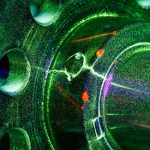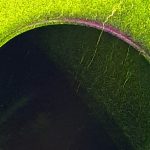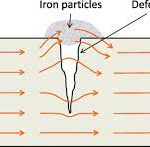A magnetic field is established in a component made from ferromagnetic material. The magnetic lines of force travel through the material, and exit and re-enter the material at the poles. Defects such as crack or void cannot support as much flux, and force as some of the flux outside of the part. Magnetic particles distributed over the component will be attracted to areas of flux leakage and produce a visible indication.
Main Uses
Used to inspect ferromagnetic materials (those that can be magnetized) for defects that result in a transition in the magnetic permeability of a material. Magnetic particle inspection can detect surface and near surface defects.
Main Advantages
- Large surface areas or large volumes of parts/materials can be inspected rapidly and at low cost.
- Parts with complex geometry are routinely inspected.
- Indications are produced directly on surface of the part providing a visual image of the discontinuity.
- Equipment cost is minimal.
Disadvantages
- Only ferromagnetic materials can be inspected.
- Proper alignment of magnetic field and defect is critical.
- Large currents are needed for very large parts.
- Requires relatively smooth surface.
- Paint or other nonmagnetic coverings adversely affect sensitivity.
- Demagnetization and post cleaning is usually necessary.




